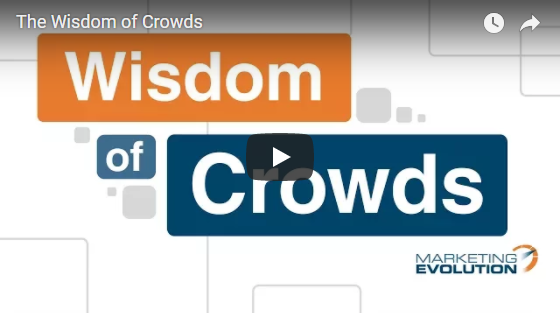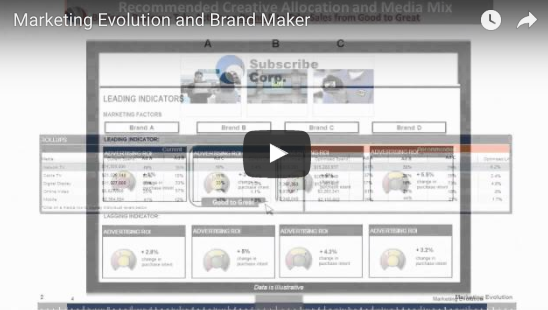Despite a Plethora of Data, Marketers Are Still Not Utilizing It to Its Full Potential
Learn how Regions Bank Perfected their customer journey
In today’s business economy and at almost every company, there is no shortage of data. Savvy professionals and teams are collecting data about their marketing performance, customer behavior, sales funnel and competition. Unfortunately, for many companies, this information is sitting untapped or not being used to its full advantage. Few businesses can thrive—let alone survive—if they fail to connect and harness the incredible power of this data to make holistic decisions about their path forward. When collected and measured effectively, disparate information can be leveraged to find heretofore unseen trends or opportunities that light the path to new competitive advantage.
Unfortunately, the opposite is also true. When there are gaps in the data, if the data is inaccurate or if the analysis of the data is done in silos, it can generate misleading conclusions and lead to poor decisions that decrease business performance. Forrester recently polled over 200 marketing professionals to evaluate the state of person-level data adoption among marketers, the foundation of real-time, relevant brand experiences, and found that a remarkable 65 percent are concerned about the quality of their data.
The path forward is clear, but it is not without its difficulty. The fact that it is hard to do is what makes it worth pursuing. Those companies that tackle the challenge today should find themselves with a clear strategic advantage that may last well into the future.
Find your data and break down barriers
Companies often don’t even know the data they’re actually collecting. A marketing manager may be tracking open and click-through rates of an email campaign to find which messages and offers lead to higher online sales. At the same time, a customer service representative may be seeing higher customer refund requests because people misunderstood the emailed offer. Without connecting this information, the marketing manager may increase their efforts as they try to accelerate the performance of their winning campaign. Unfortunately, these sales may actually be costing the company in both increased cost and damaged brand reputation. It is vital to audit the data collection activities of disparate parts of the business and connect them to get a better understanding of your customer’s complete journey.
As a very first step, since data may come from multiple departments inside the company and various agencies that support the team, develop a cross-functional steering committee consisting of representatives from analytics, marketing, finance and digital and traditional media agencies. The steering committee should have a member of the team responsible for overall quality and flow. As a team, work together to set benchmarks for quality and meet regularly to discuss areas for improvement.
Let the data be your guide
By 2020, it is estimated that 1.7 MB of data per person will be produced every second. Despite this data deluge, a Dun & Bradstreet and Forrester surveyrevealed that only 50 percent of b-to-b marketing and sales decisions are backed by data.
According to the report, disparities in data quality and consistency cause business leaders to distrust the accuracy of their customer data, relying instead on a legacy technique: their own intuition. There’s a fundamental truth here that we should keep in mind: What matters gets measured.
As leaders, we must become voracious consumers of data within our organization. We should demand and work with the team to ensure a steady and reliable flow of accurate information. Creating easy to understand dashboards and working to visualize data inside your organization can help change the organization’s appreciation for this most valuable resource.
Invest in tools that unlock better decision-making
According to the Gartner CMO Spend 2018–19 survey, nearly one-third of CMO budgets are now allocated to finding and onboarding marketing technology, up from 2017, positioning mar tech as the single largest investment area in marketing. Forrester found that despite over 70 percent of respondents having or expanding customer data capabilities, 71 percent are struggling to connect their tools into a more cohesive approach to measurement. Fewer than one-third of organizations are “mature” when it comes to optimizing marketing measurement. Clearly, they understand the need for accurate data to inform decision-making, and they want a solution.
Yet the majority of marketers are relying on outdated measurement methods that simply will not cut it in a fast-paced, hyper-competitive marketplace where connecting with potential customers at the right time with the right message is mission critical. Despite the benefits and advantages of a modern attribution solution, erroneous information can be their undoing. To be sure your tools are working correctly, you’ll want to create a clear understanding of your data and work with a partner who can build an early warning system for when there’s a problem. Ultimately, this upfront work ensures more accurate analysis and will help you achieve the goal of improving your company’s marketing ROI.
Data is only growing to become increasingly vital for an organization’s success. Equally, if not more important than the data itself, are the analytic insights that can be derived only from robust, state-of-the-art measurement and technology now available to marketers. Organizations that adopt these newer approaches, including person-centric unified measurement, will not only feel confident about their data but also the insights it reveals.








.jpg)











